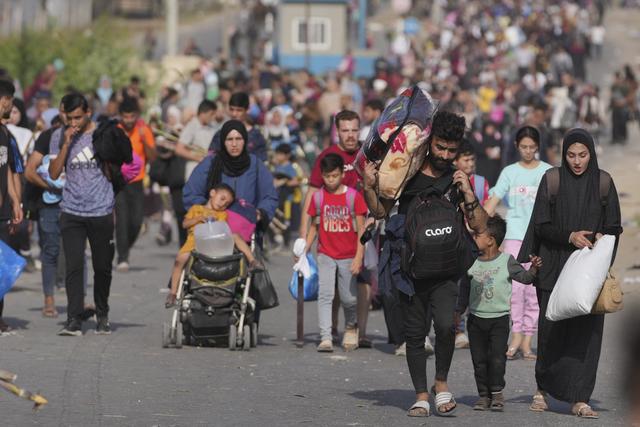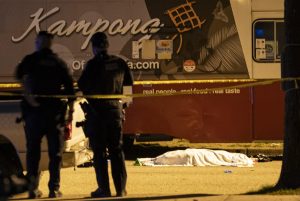Thousands of Palestinians evacuated northern Gaza on Wednesday, walking for kilometers through the shattered territory as Israel’s ground and air bombardment continued.
Streams of people, including women, children, the elderly, and the crippled, made their way along Salah Eddin Street, one of Gaza’s two north-south arteries, along an evacuation corridor declared by the Israel Defense Forces.
One adolescent compared the protests to the “Nakba,” or disaster, the Arabic name for the displacement of Palestinians from their communities during Israel’s establishment.
The IDF established an evacuation window for the sixth day in a row, and the number of Palestinians leaving south has grown each day.
According to the UN, 2,000 people fled south on Sunday, with the figure growing to 15,000 on Tuesday. The Israeli administration reported that 50,000 Gazans used the evacuation route on Wednesday. That figure could not be independently verified, but a CNN correspondent on the site stated the numbers departing were higher than on Tuesday.
Following the October 7 assaults that killed 1,400 Israelis, Israel has increased its onslaught within Gaza.
According to Israeli Defense Minister Yoav Gallant, IDF forces are in the “heart of Gaza City,” attacking Hamas infrastructure and leaders. It’s unclear where Israel is battling. “Gaza is the largest terror stronghold that humanity has ever constructed.” This entire city is a massive terror base. “They have kilometers of tunnels underground connecting to hospitals and schools,” Gallant explained. “We continue to dismantle this capability.” For weeks, the IDF has been shelling Gaza, claiming to have targeted 14,000 terrorist targets in the densely populated region. In southern Gaza, a man who would not provide his name told a CNN correspondent that he and his neighbors had suffered through “horrifying days.” He claimed that after leaving their house in northern Gaza and moving multiple times, they were unable to avoid the bombardment.
“Nothing was safe during this war, not churches, mosques, or anything else.” They dropped the leaflet today, telling us to go to the ostensibly secure place. We are now across Wadi Gaza, and we are still hearing bombardments. In Gaza, there is no safe haven.”
“There are seven of us. Our houses are all gone. There is nothing left. We couldn’t take anything, not even clothing or water. The journey here was arduous. You are not permitted to take up anything that has fallen. You are not permitted to take your time. “There are dead bodies everywhere.”
Few things were carried in the arms or on the backs of people. Some sat atop donkey-drawn carts. On Tuesday, some were spotted brandishing white flags and holding identifying documents aloft.
“Donkey carts are the only means of transportation left,” Abu Ida was quoted as saying. “Not only is there no solar power or fuel left for cars, but those who do have cars are afraid to use them.” I can’t walk because I have diabetes; there’s no way I’ll be able to walk on my own.”
A woman who would not provide her name stated that “we are being destroyed.”
“No one is concerned about us. We may be secure now, but I’m not sure about those who remain behind. I’m not sure where my family is. My siblings are on my side. I couldn’t glance behind me because I was afraid. Not to the right or to the left.
“On our way from Al Shifa [Hospital], we saw death.” “Dead bodies everywhere, destruction everywhere.”
CNN,2023









